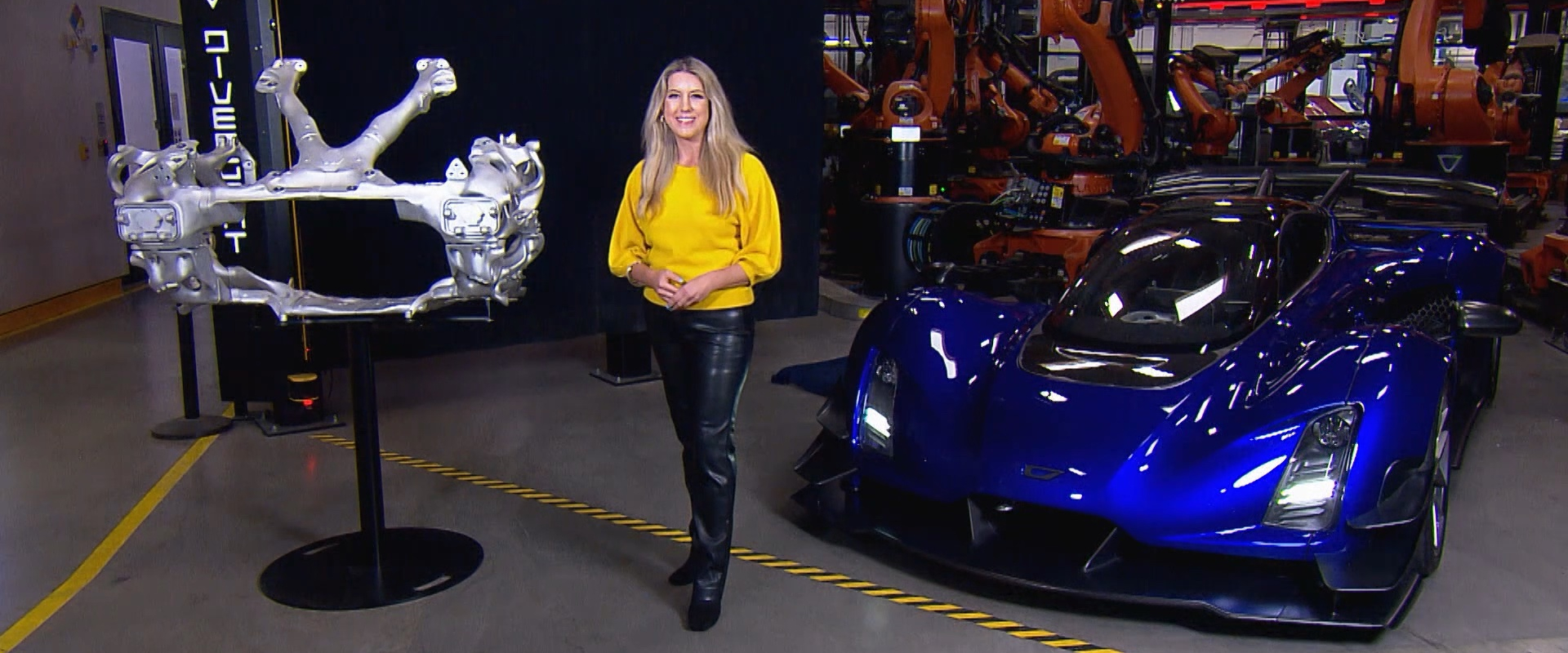The Future of Auto Manufacturing?
Over four decades, MotorWeek has toured our share of automotive design studios and assembly plants. And the end-to-end process is basically the same as it was a hundred years ago. Well, one young American automaker is out to change all that, with hypercars, 3D printing and artificial intelligence-aided design as just a teaser. Our Stephanie Hart got an inside look at the coming revolution.
STEPHANIE HART: It’s pretty incredible to be here inside the Divergent factory in Los Angeles, CA. Not many people are allowed back here, let alone allowed to record video, because it’s top secret, so we are really lucky. You’re looking at the 21C, the world first AI-designed, 3D-printed hypercar.
LUKAS CZINGER: It features many high-performance specs. For example, 1,350 horsepower; the world’s first 3D-printed gearbox, seven-speed electronically actuated; and in-line seating, so you see pilot in the front and co-pilot in the rear, just like a fighter jet.
STEPHANIE HART: Very cool! This V8 hybrid hypercar goes from 0-60 in under 2 seconds, giving us a rolling peak into how vehicles could be manufactured in the future.
LUKAS CZINGER: The 21C is the world’s fastest production vehicle today on the track. It has track records at Laguna Seca and at Circuit of the Americas. It also represents the first vehicle that is digitally engineered, so generative design with the help of AI has actually engineered the structures, the chassis, the suspension, the frames that make up the structural backbone of the 21C.
STEPHANIE HART: Lukas and Kevin Czinger founded Czinger Vehicles in 2019 after the father-son duo invented a very advanced set of manufacturing tools. As a result, several cars were created, including the 21C hypercar.
Globally, nothing like this had ever been done before, completely reimagining how to design and build a car.
KEVIN CZINGER: If the auto industry is still in the typewriter era, which it is from a manufacturing standpoint, those tools are like Mac desktop publishing. Instead of using tooling of a car, you use a digital system that generates a structure and prints that structure and assembles it.

STEPHANIE HART: Everything about it sounds, looks and feels very futuristic. A kind of Westworld for cars. Many of us are familiar with plastic printing, but metal 3D printing is fundamentally different.
Components of the 21C were 3D printed right here; that’s one of five 3D print rooms here at the Divergent factory. Let’s head inside and take a closer look.
Think of metal 3D printing as a highly advanced laser welding process. To see it in action, up close and personal, is really fascinating.
LUKAS CZINGER: So, you have powdered metals, like aluminums or steels; in our case, a patented aluminum, meaning we have actually created that material. It’s in powder form and it sits on a print bed flat, and you have got your lasers overhead. In our case, we have twelve lasers. They’re melting that powder and the rate at which they melt that powder layer by layer, like a cake, a layer cake, essentially makes that part.
You actually don’t need a tooling and fixturing stage at all. So as soon as you release that design in the digital world, and you have a CAD image of that chassis part, suspension, frame, etc., you are able to print it immediately and assemble it immediately.
STEPHANIE HART: On a bigger scale, such revolutionary new techniques could completely change car design and manufacturing as we know it. As you may expect, Czinger is working with several OEMs including Mercedes and Aston Martin with more on the horizon.
STEPHANIE HART: What is your ultimate goal here?
DAVID O’CONNELL: It’s sort of this holy trinity of technology, performance and design that’s all rolled up into one package, and that’s what the 21C and V Max represent.
STEPHANIE HART: A limited 80-car run of Czinger’s 21C and 21C V Max, the high downforce version, are now being delivered to customers. But, this high-performance luxury American rooted brand has big plans to go beyond hyper cars one day, infusing the 21C’s flashy, feisty and futuristic spirit into every car segment, forever changing what’s inside what we drive.










